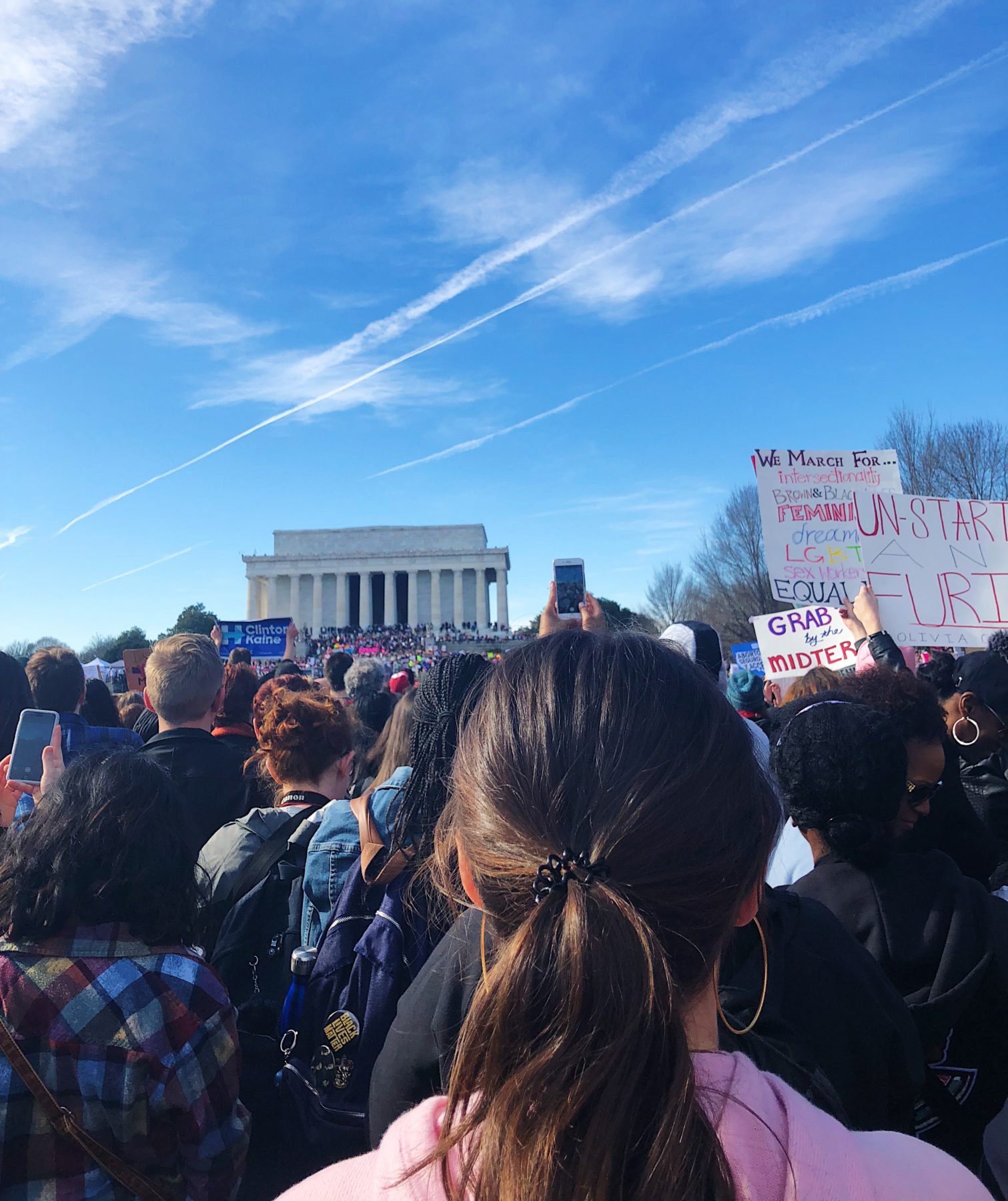Alexis Springer wavered between closing her eyes and staring at the harsh, fluorescent lights on the ceiling of the examination room. She was shaking uncontrollably, despite the sedative her doctor had given her to ease her anxiety during the insertion of an intrauterine device (IUD).
As the doctor proceeded with the insertion, “it felt like I was being stabbed and pinched at the same time,” said Springer, now 26. She could feel the device inside her as she walked out of the doctor’s office in Las Cruces, New Mexico, and her cramps lasted for two weeks.
That was January 2017. Despite her deep anxiety about the procedure, Springer, who was still covered by her father’s insurance, had decided to switch from the birth control pill to an IUD, a T-shaped piece of plastic that is implanted into the uterus to safeguard against an unwanted pregnancy. Springer and her fiance were struggling financially because of student loans and the significant credit card debt they had accumulated as graduate students. Springer was also concerned that the administration of the newly-elected President Trump would restrict birth control options, availability or affordability.
Springer, a writing tutor and freelance editor who now lives in Muskegon, Michigan, is among the many women whose birth control decisions during the past four years have been based on politics and not always on what was best for their health. While President Joe Biden has said that expanding access to reproductive health care, including abortion, is a priority, women like Springer are living with the decisions, often painful, they have made. A JAMA Internal Medicine study of women covered by commercial insurance found that the number of women seeking contraceptive implants, including IUDs, rose nearly 22 percent in the 30 days following Trump’s November 2016 election.
Many of the concerns of these women have played out during the past four years as the expanded access to birth control that was provided under the Affordable Care Act has been rolled back. In July, the Supreme Court upheld a Trump administration regulation that allows employers to deny birth control coverage for religious reasons. On January 12, the Supreme Court ruled that women seeking the abortion pill, mifeprestone, must pick it up in person from a doctor, medical clinic or pharmacy.
“The coverage of everything has gotten worse,” said Dr. Barbara Held, an obstetrician-gynecologist based in Houston, Texas, of her 20 years in practice. “The Affordable Care Act did a great job at covering birth control and making it available. … It’s just been chipped away in the last four years.”

Access is one factor. Cost is another. Birth control pills, taken daily, can cost up to $100 monthly depending on a patient’s insurance coverage. A single IUD can prevent pregnancy for up to 10 years. However, without insurance, popular IUDs like Kyleena and Mirena can cost more than $950 upfront. While 65 percent of women ages 15-49 use contraception, according to the Centers for Disease Control and Prevention, a 2017 survey by PerryUndem, a public opinion research firm that specializes in gender and healthcare, found that 1 in 7 women reported not being able to afford birth control.
Held, the Houston doctor, said she works to make as many birth control options financially viable for her patients by offering savings coupons from pharmaceutical companies and writing letters of appeal to insurance companies asking them to cover contraception.
“Women are just frustrated when they can’t get exactly what [doctors] think is the best thing for them,” said Held. “It’s frustrating for me as well.”
Uncertainties about access have been especially frustrating for women who have made the switch to IUDs even though birth control pills were the better option for them.
Amira Ferjani, a 22-year-old communications specialist from Raleigh, North Carolina, began taking birth control pills in 2014 at age 16 because she was experiencing horrible menstrual cramps. Her mother’s insurance didn’t cover contraceptives for children except to treat a medical condition. Since that was the case with Ferjani, the family’s doctor was able to help them get the coverage, Ferjani said.
In 2017, not long after Trump took office, Ferjani, then 19, decided to get an IUD. She was tired of having to appeal constantly to the insurance company to cover her birth control pills, she said. She was now sexually active and concerned about access to abortion should she have an unwanted pregnancy. Knowing that IUDs are more effective than the pill, she submitted her Starbucks pay stub, where she was working as a supervisor at the time, to her local Planned Parenthood and made an appointment to get the device. Because of her low income, the clinic inserted Farjani’s IUD at no cost to her.

Though Ferjani felt immense pain during the procedure, “it was worth it for the peace of mind,” she said. “I didn’t think there was another option, so it was just like, ‘This sucks, but it’s in my body for the next few years and that’s it.’ ” She expects to have the IUD removed in 2022.
Ferjani is relieved to no longer be battling the insurance company but is disappointed at the side effects the device has had on her body. Her menstrual cramps feel “sharper,” she said, and she has also gained weight, which she attributes to the IUD. “Watching that scale go up and up … and putting on my clothes and realizing they don’t fit — it hurts a lot,” she said.
Like Springer and Ferjani, Kitty Reynolds, who got a Paraguard IUD in November 2018 as a shield from Trump-era contraception regulations, said she would rather endure painful side effects than face uncertainty over access to the pill.
The 25-year-old New York-based comedy writer has had a history of ovarian cysts and was put on the pill at age 15 to lower her risk of getting cysts and to help combat the pain caused by their constant rupturing. The IUD does not provide the same relief, she said, and in January 2020 she ended up in a hospital emergency room unable to move because of intense abdominal pain caused by a ruptured cyst and serious internal bleeding.
Reynolds rides out painful periods as a “prisoner of the heating pad,” she said, and is unable to perform comedy on her social media accounts on those days.

Her gynecologist suggested that she consider removing her IUD because it is too large for her uterus and ovaries to handle. But Reynolds protested because it was paid for by her parents’ insurance and is already inside her body.
Looking ahead, Reynolds plans to monitor Supreme Court decisions until her next birthday when she turns 26 and gets bumped off her parents’ insurance. If access to contraception or healthcare is further blocked before her birthday, she plans to get a new IUD inserted while she still has coverage. With student loans, she can’t afford a replacement IUD out of pocket. By sheer luck, she has not experienced a ruptured cyst since last January.
Ferjani is optimistic that Biden’s promised expansion of the ACA will force more insurance companies to cover birth control. With better insurance options, she hopes to switch to a different IUD or get back on the pill.
Springer, who recently aged out of coverage on her father’s plan, wants to have secured health insurance by the time her IUD is removed in 2022. Alternatively, she hopes for a plan by the Biden administration to cover her future contraception if she is not in a place financially to have children upon the removal of her IUD. She is also crossing her fingers for student loan debt relief.
All three women would like to believe there will come a time when they will be able to make decisions more freely about their bodies, but all are exasperated waiting for change.
“How much of a choice do I have if I’m constantly having to make decisions about my body that I don’t really want to do, in order to protect myself against … people who just want to roll back women’s rights?” Springer said.
About the author(s)
Tricia Crimmins is a journalist living in Manhattan. She currently reports for Moment Magazine and NY City Lens, and performs on Exit Interview, an improv comedy podcast. She is also the Twitter editor for NY City Lens. Her previous work can be found on The Daily Dot, Mashable and Complex Networks. She is interested in reporting on gender, sexuality, and mental health, and is a part-time student at Columbia Journalism School. Twitter: @TriciaCrimmins



